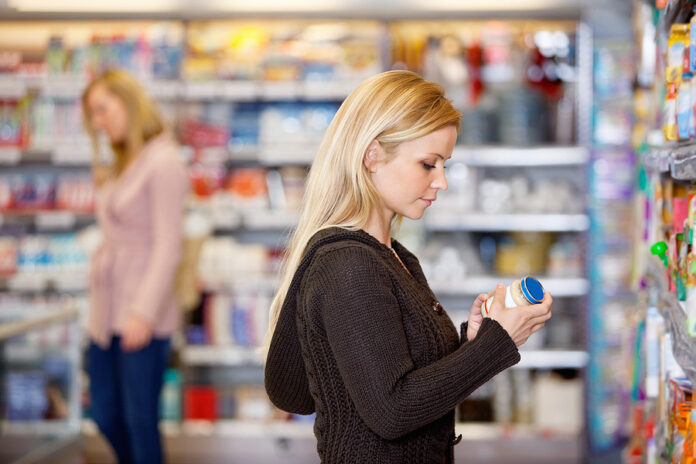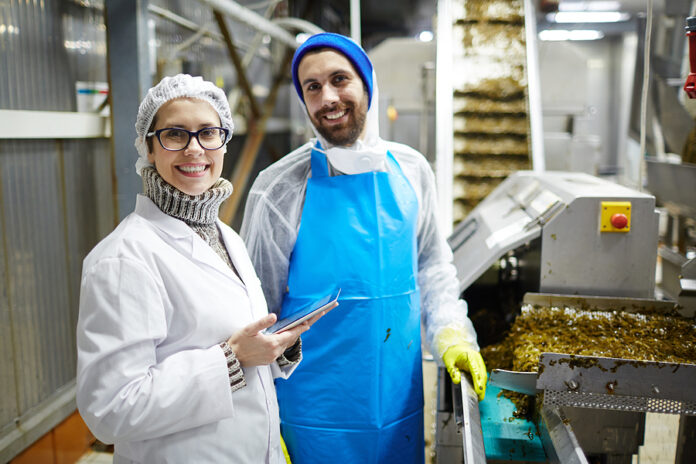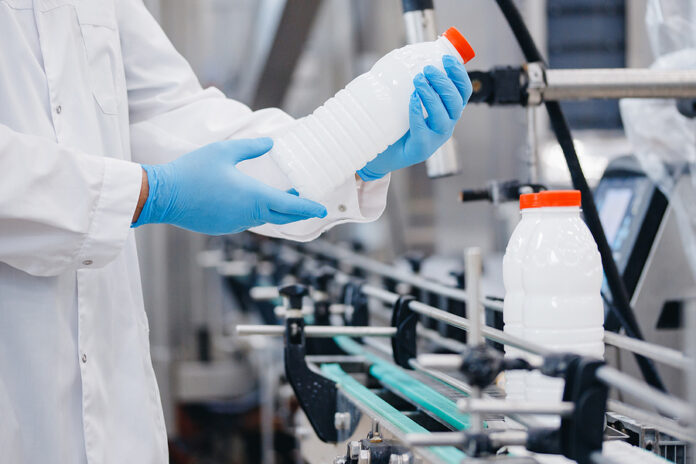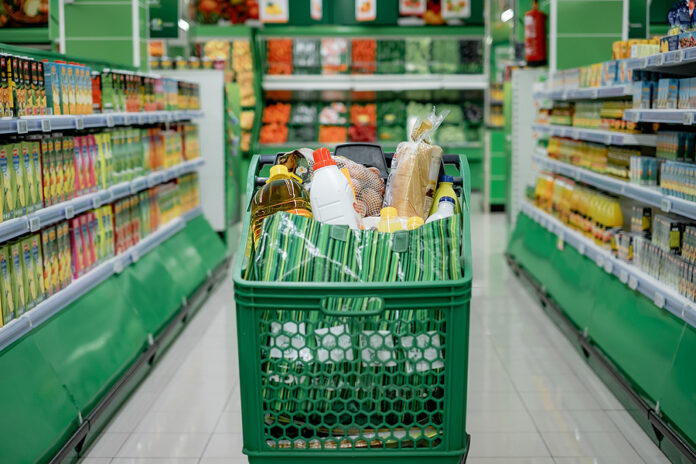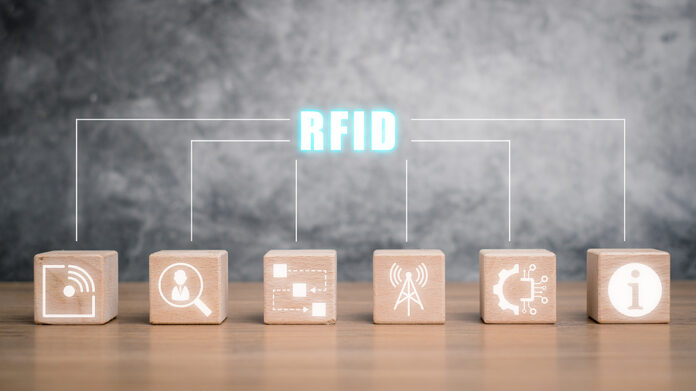
By Ken Feinstein, Vice President, MIDCOM Data Technologies
Key takeaways:
-
RFID is rapidly becoming essential in food logistics for meeting FDA Food Traceability Rule (FTR) requirements, offering real-time tracking, recall efficiency, and enhanced food safety from farm to fork.
-
Advanced RFID technology now includes smart tags with environmental sensors that monitor conditions like temperature and humidity, turning each package into a mini quality control agent and enabling proactive issue prevention.
-
RFID, combined with cloud platforms, enables enterprise-wide visibility and AI-powered logistics, giving early adopters a competitive edge in compliance, operational efficiency, and consumer trust.
While the FDA’s delay of its Food Traceability Rule (FTR) may have bought companies a little more time (July 20, 2028, to be exact), the clock is still ticking, and the smartest players in food logistics aren’t waiting. Across the supply chain, radio-frequency identification (RFID) technology is stepping into the spotlight and not just as a tool for compliance, but as the key to safer, faster, and smarter food operations.
RFID is no longer the quiet backstage hand tracking retail apparel. It’s now the brain and nervous system of intelligent logistics, especially in sectors where freshness, speed, and traceability are everything. In food logistics, RFID isn’t a “nice-to-have,” it’s becoming non-negotiable because food safety should be non-negotiable, too.
The FTR mandates enhanced traceability recordkeeping for entities that manufacture, process, pack, or hold foods on the Food Traceability List (FTL), from leafy greens and deli salads to shell eggs and nut butters. These new requirements are designed to accelerate the identification and removal of potentially contaminated food from the supply chain, reducing the risk of widespread foodborne illness. Companies must track Critical Tracking Events (CTEs) and maintain Key Data Elements (KDESs) throughout the lifecycle of traceable products in order to comply.
While the new deadline moved from January 2026 provides breathing room, it doesn’t signal a rollback in expectations. The FDA has been clear that these rules are not going away, and many companies, from suppliers to retailers, are already pushing ahead with technology investments to ensure they’re not caught unprepared and at risk for noncompliance. Thankfully, RFID technology is well suited to meet the FTR’s demands.
From labels to lifelines: RFID’s role in food safety and compliance
Despite the new deadline, food companies aren’t slowing down RFID adoption, and for good reason. The technology’s ability to dramatically improve traceability and recall efficiency is already being proven by early adopters like Kroger, Chipotle, and Albertsons.
What used to be a barcode scan is now a full transparency system. With RFID, companies can track products through the entire supply chain, knowing where an item is and how it’s been handled. This becomes invaluable in the event of a contamination scare, where rapid identification and removal of affected items can prevent consumer harm and reputational disaster.
RFID can help companies generate the sortable, digital records that the FDA will require within 24 hours of request during an outbreak or recall. When RFID is embedded into packaging, businesses can link traceability lot codes (TLCs) with shipment and transformation data, allowing for seamless tracking from farm to fork.
Smarter tags, smarter decisions
The RFID of today is lightyears ahead of its early iterations. The next generation of tags is built for intelligence integrating environmental sensors, increased memory, and even localized decision-making power.
Need to know if that box of lettuce sat too long in a hot truck? RFID tags can now track and store condition data like temperature, humidity, and shock-triggering alerts when thresholds are breached. These smart tags transform every package into a tiny, autonomous quality control agent. This results in not only finding out that something went wrong, but stopping it before it does. That’s a paradigm shift for cold chains and food safety protocols.
Tag, you’re it: Smarter packaging for a faster, fresher food chain
RFID is becoming more flexible and food friendly than ever. Thanks to advancements in printed electronics, food manufacturers, distributors, and retailers can now print RFID tags on demand, customized for specific products, packaging types, or cold chain requirements. This adaptability is a game changer for food logistics, where SKUs change frequently, packaging formats vary by item, and regulatory labelling needs evolve across categories. Whether it’s fresh produce, frozen meals, or ready-to-eat snacks, RFID tags can now be tailored for each product’s journey, tracking everything from origin to temperature exposure to expiration.
Even better, these ultra-thin tags can be embedded directly into food packaging, improving durability, preventing label tampering, and maintaining a clean, branded appearance. Sustainability is also built in. New studies show that RFID materials can separate cleanly from packaging fibers during recycling with no impact on recyclability.
The cloud command center: RFID meets global visibility
As supply chains stretch across borders, RFID’s power grows exponentially when paired with cloud-based systems. These platforms unify tag data from across facilities, warehouses, and transportation networks offering real-time, enterprise-wide visibility. The elimination of these communication silos is about connecting operations, surfacing actionable insights, and creating responsive supply chains that can pivot instantly, whether it’s rerouting a shipment, restocking a retail shelf, or initiating a product hold. It also lays the groundwork for AI-driven optimization and predictive logistics, where RFID is the sensory input that fuels smarter, automated decisions.
A preemptive approach is a competitive advantage
The FDA’s traceability mandate may be the catalyst, but it’s not the endgame. RFID is poised to become the standard infrastructure of intelligent logistics. Those who treat it as a compliance checkbox risk missing its transformative potential. RFID not only helps meet FDA requirements, it also empowers businesses to:
- Reduce product shrink and counterfailing
- Accelerate recalls with pinpoint accuracy
- Improve inventory visibility and labor efficiency
- Strengthen brand trust through transparency
Rather than viewing July 2028 as a deadline, companies should see it as the latest acceptable arrival date to a destination the market is already heading toward. Those who get there early will both guarantee compliance and lead the way.
The bottom line: RFID is already here
RFID is the infrastructure of today’s most advanced food supply chains, and it’s rapidly moving from innovation to expectation. Whether it’s smarter tags monitoring freshness, cloud-connected dashboards driving responsiveness, or recyclable packaging seamlessly embedded with tracking technology, RFID is reshaping how food moves, how risks are managed, and how trust is built.
The question isn’t whether you’ll adopt RFID. It’s whether you’ll lead with it, or play catch up.
 Ken Feinstein is the Vice President of MIDCOM Data Technologies.
Ken Feinstein is the Vice President of MIDCOM Data Technologies.
Credit: Source link



